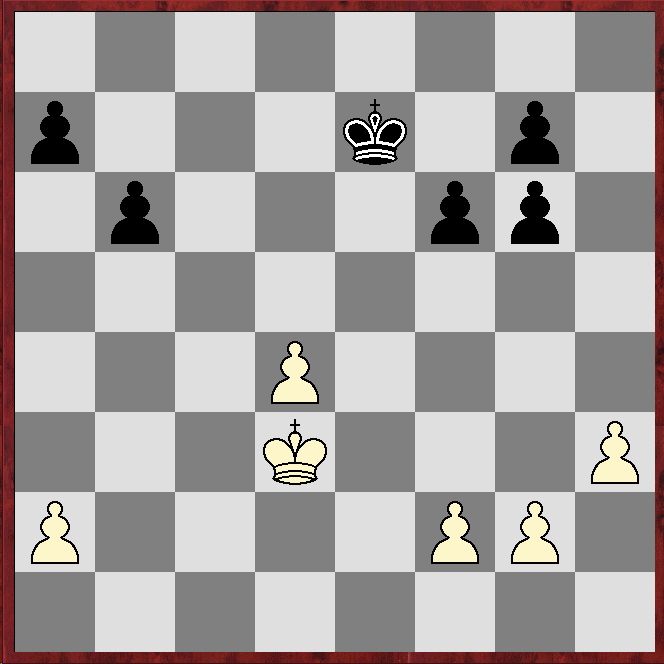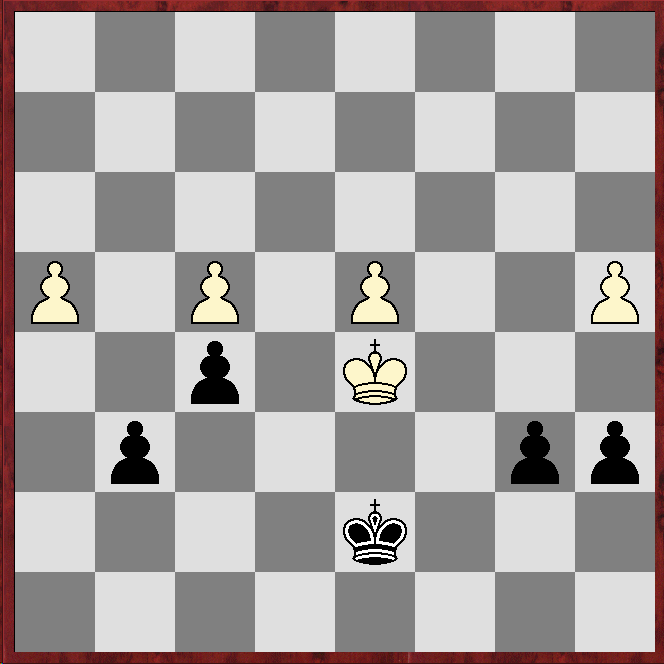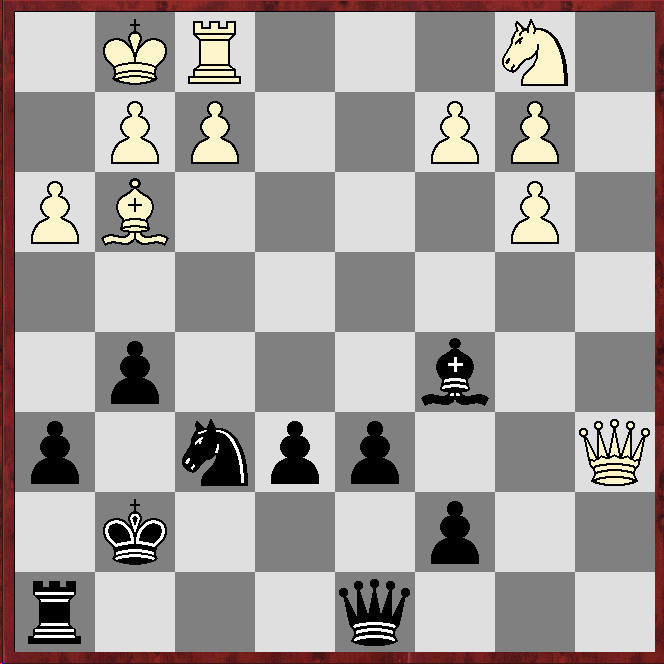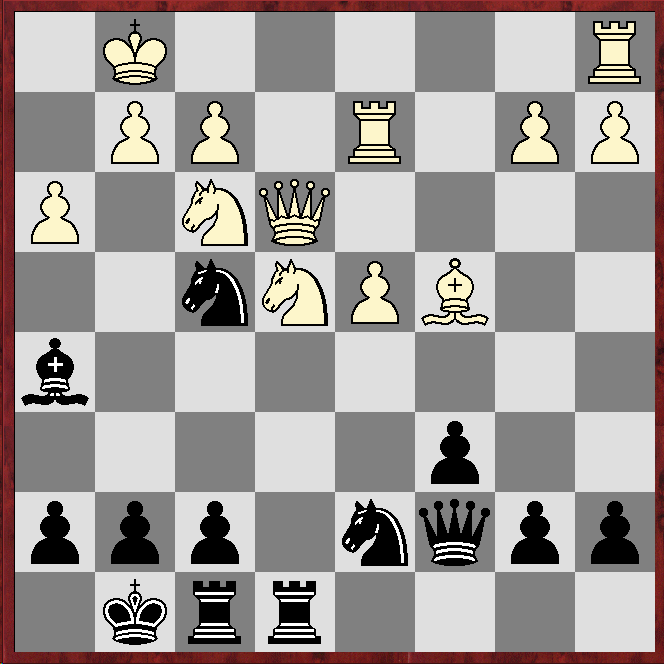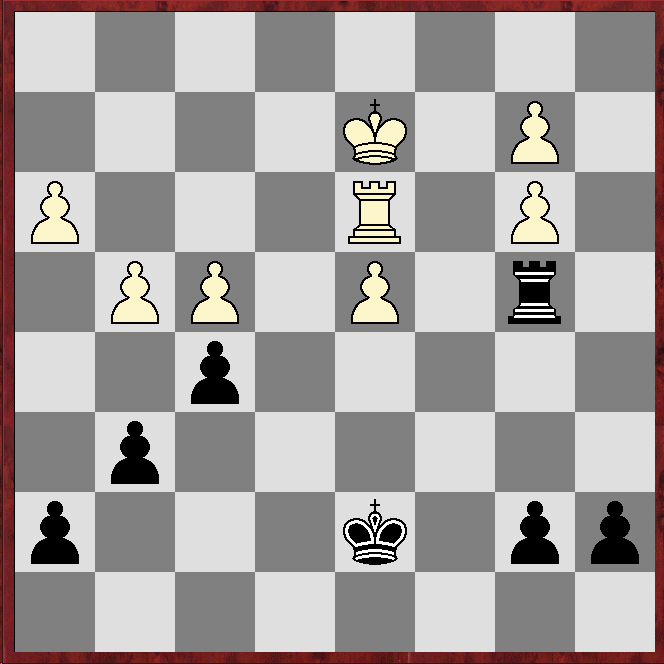FACED a junior (born 2008).
Daniel Vollheim (1713) - Spanton (1876)
QGD Exchange
1.c4 e6 2.Nc3 d5 3.cxd5!?
This is often frowned on as making it too easy for Black to equalise. However there are 4,788 examples of the move in ChessBase's 2024 Mega database, and it has been played by many grandmasters.
3...exd5 4.d4 c6
More popular is 4...Nf6, but that is a transposition to the mainline of the Exchange Variation. The text scores 10 percentage points better in Mega24.
5.Nf3 Bf5
This is the point of the 'equalising' method, it being generally considered harder for White to get an edge in the Exchange Variation if light-square bishops come off early.
6.e3!?
The commonest continuation in Mega24 is 6.Bf4 Nf6, and now 7.e3.
6...Bd6!?
Stockfish16 and Komodo14.1 agree this is better than the usual 6...Nf6, after which White has 7.Nh4.
7.Bd3!?
This is easily the most popular move in Mega24.
7...Bxd3 8.Qxd3
 |
| How would you assess the position? |
*****
*****
*****
*****
*****
White has a lead in development, but Black has much the better bishop, and it is far from clear if White's normal Minority Attack plan has much chance of succeeding. The engines give Black a slight edge.
8...Nf6 9.Bd2 0-0 10.0-0 Nbd7 11.Rfe1!?
Presumably hoping to get in e4 to free the bishop, but this is easily stopped. The engines suggest an immediate 11.e4, but prefer Black.
11...Re8
 |
| How should White proceed? |
*****
*****
*****
*****
*****
12.Rad1
Six out of nine whites to play this position in Mega24 chose 12.e4?, but it is too late for that move, although no black found the engines' refutation.
*****
*****
*****
*****
*****
After 12.e4? dxe4 13.Nxe4 Rxe4! (everyone in Mega24 chose the inferior 13...Nxe4) 14.Rxe4 Black has the winning 14...Nc5!, when the engines give as best 15.dxc5 Bxh2+ 16.Kxh2 Qxd3, awarding Black the equivalent of being at least a minor piece ahead.
The text avoids such a disaster, but after ...
12...Ne4
... Black's advantage is obvious.
13.h3 Re6 14.Qc2 Ndf6 15.Nxe4 Nxe4 16.Bc3 Rf6 17.Qe2 Qd7 18.Rf1 Re8
 |
What should White play?
|
*****
*****
*****
*****
*****
19.Nd2?!
Withdrawing White's one well-placed piece is unlikely to be the answer. The engines suggest 19.Ne5!?, even though Black can win a pawn by 19...Nxc3 20.bxc3 (20.Nxd7? Nxe2+ 21.Kh1 Ng3+!? 22.fxg3 Rxf1+ 23.Rxf1 Rxe3) Bxe5 21.dxe5 Rxe5. Even stronger may be a queen move, eg 19...Qc7, followed by continuing to build up against the white king's position.
19...Qf5
Even stronger, according to the engines, is 19...Rg6!?
20.Nxe4
White drops a pawn after 20.Qg4 Qxg4 21.hxg4 Rg6.
20...Rxe4 21.f4?
Best, according to the engines, is 21.f3, when 21...Qf4!? 22.exf4 Rxe2 looks good, eg 23.Rfe1 Rxe1+ 24.Rxe1 Kf8 25.g3 g5! Also very promising is Stockfish16's 21...Qh5!?, eg the plausible 22.g4 loses to 22...Qxh3 23.fxe4 Rg6.
21...Bxf4! 22.Rf3 Qe6 23.Re1 Bc7 24.Rxf6 Qxf6 25.Rf1 Qg5 26.Bd2 Qe7 27.Qf3 h6 28.a3 Re6 29.Qg4
If 29.Bb4, then 29...Qe8 is fine.
29...Rg6 30.Qc8+ Kh7 31.Qf5 Kg8 32.Qc8+ Bd8 33.Kh1
So that, if the white bishop moves, a black capture on e3 does not come with check.
33...Qc7 34.Qxc7
If 34.Qa8, then 34...Kh7 is possible (34...a6 is also good) as 35.Qxa7?? loses to 35...Qg3 36.Rg1 Bc7 and 37...Qh2#.
34...Bxc7 35.Kg1 Re6 36.Rf3 Bd8!? 37.Kf2!?
The engines are OK with this, but from a practical view it is probably easier, at least for humans, to win this type of position with rooks off the board.
37...Rf6
The engines suggest 37...h5 or 37...Bh4+ (but see the previous note).
38.Ke2 Rxf3 39.Kxf3
The engines prefer this over recapturing with the g pawn.
39...Bg5 40.Kg4 g6 41.h4!?
Putting another pawn on a dark square may be unwise, but at least the move gains space.
41...f5+ 42.Kh3 Bf6 43.b4!? Kf7 44.g4?!
The engines strongly dislike this, preferring, for example, 44.g3!?, which puts yet another pawn on a dark square but makes it more difficult for Black to penetrate on the kingside.
44...Ke6 45.Be1 Be7 46.Bg3 a5!? 47.Be1 Bd6 48.Bd2 b6!? 49.bxa5 bxa5 50.Bxa5
If 50.a4, then 50...Bb4.
50...Bxa3 51.Bc7
 |
| How should Black continue? |
*****
*****
*****
*****
*****
51...Be7
Most moves are winning. The key is to avoid 51...Bd6?, when 52.gxf5+ gxf5 53.Bxd6 Kxd6 54.Kg3 is a drawn pawn-ending. But note that 52.Bxd6?, with the same idea in mind, loses to 52...fxg4+ etc.
52.Bb6!?
Preventing ...c5, but that was arguably a lesser evil. The engines give 52.Bg3. However 52...c5 53.dxc5 Bxc5 54.Bf4 h5 55.gxh5 gxh5 wins, eg 56.Kg2 Bd6 57.Bg5 Be7 etc.
52...g5 53.h5
Even worse is 53.hxg5? Bxg5 etc.
53...Bb4
White loses a second pawn.
54.Kg3 Bd2 55.Kf3 fxg4+ 56.Kxg4 Bxe3 57.Bc5 Bg1!? 58.Bb6 Bh2 59.Bc5 Bd6 60.Bb6 Kd7 61.Kf5 Kc8 62.Kg6
Other moves also lose.
62...g4 63.Ba5 g3 64.Be1 g2 65.Bf2 Bh2 66.Kxh6 g1=Q 0-1
